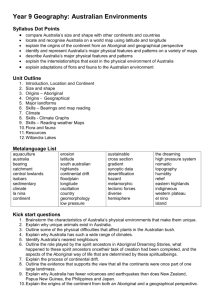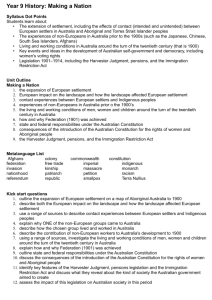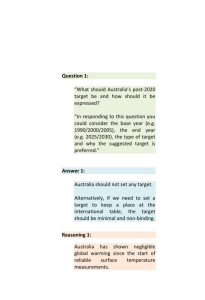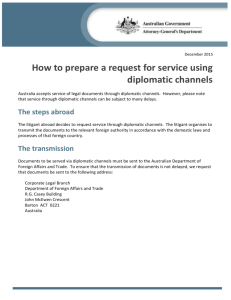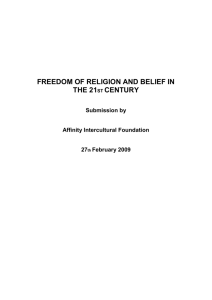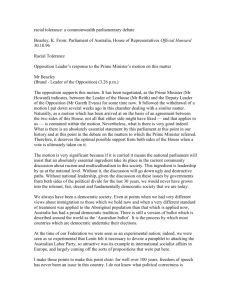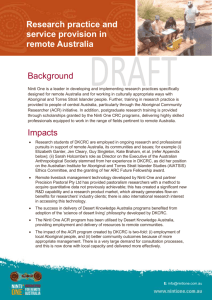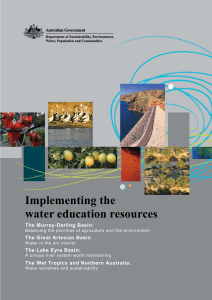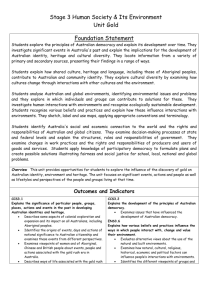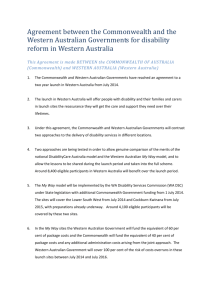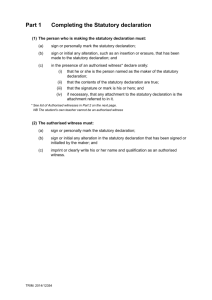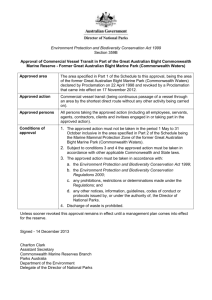A Short History of Australia
advertisement
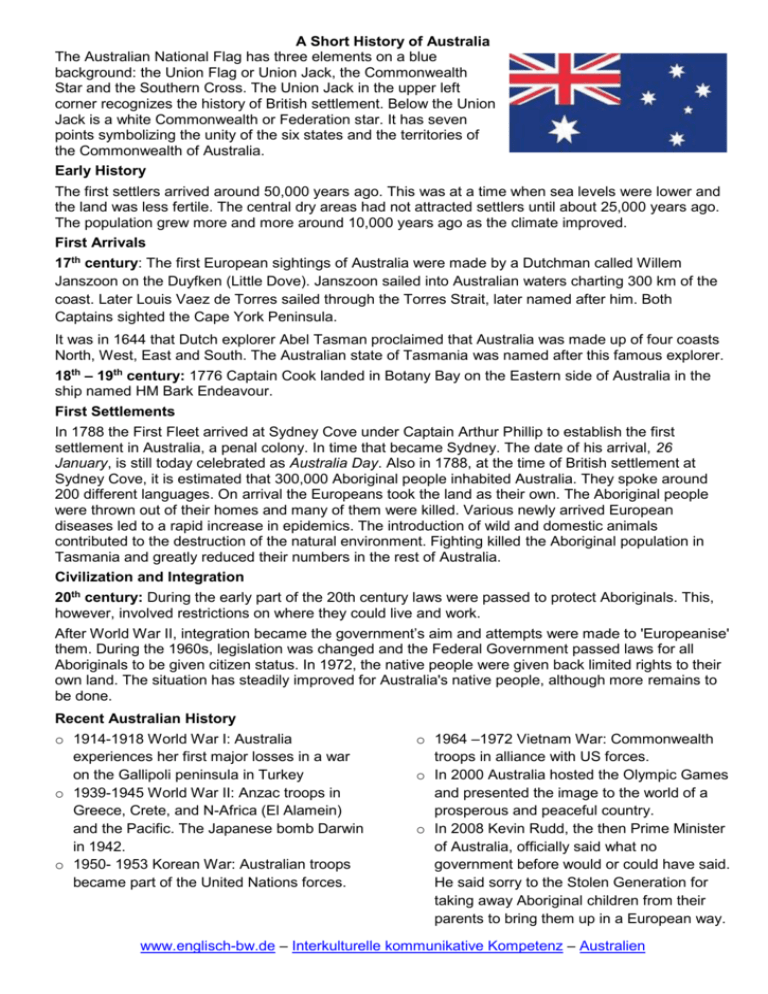
A Short History of Australia The Australian National Flag has three elements on a blue background: the Union Flag or Union Jack, the Commonwealth Star and the Southern Cross. The Union Jack in the upper left corner recognizes the history of British settlement. Below the Union Jack is a white Commonwealth or Federation star. It has seven points symbolizing the unity of the six states and the territories of the Commonwealth of Australia. Early History The first settlers arrived around 50,000 years ago. This was at a time when sea levels were lower and the land was less fertile. The central dry areas had not attracted settlers until about 25,000 years ago. The population grew more and more around 10,000 years ago as the climate improved. First Arrivals 17th century: The first European sightings of Australia were made by a Dutchman called Willem Janszoon on the Duyfken (Little Dove). Janszoon sailed into Australian waters charting 300 km of the coast. Later Louis Vaez de Torres sailed through the Torres Strait, later named after him. Both Captains sighted the Cape York Peninsula. It was in 1644 that Dutch explorer Abel Tasman proclaimed that Australia was made up of four coasts North, West, East and South. The Australian state of Tasmania was named after this famous explorer. 18th – 19th century: 1776 Captain Cook landed in Botany Bay on the Eastern side of Australia in the ship named HM Bark Endeavour. First Settlements In 1788 the First Fleet arrived at Sydney Cove under Captain Arthur Phillip to establish the first settlement in Australia, a penal colony. In time that became Sydney. The date of his arrival, 26 January, is still today celebrated as Australia Day. Also in 1788, at the time of British settlement at Sydney Cove, it is estimated that 300,000 Aboriginal people inhabited Australia. They spoke around 200 different languages. On arrival the Europeans took the land as their own. The Aboriginal people were thrown out of their homes and many of them were killed. Various newly arrived European diseases led to a rapid increase in epidemics. The introduction of wild and domestic animals contributed to the destruction of the natural environment. Fighting killed the Aboriginal population in Tasmania and greatly reduced their numbers in the rest of Australia. Civilization and Integration 20th century: During the early part of the 20th century laws were passed to protect Aboriginals. This, however, involved restrictions on where they could live and work. After World War II, integration became the government’s aim and attempts were made to 'Europeanise' them. During the 1960s, legislation was changed and the Federal Government passed laws for all Aboriginals to be given citizen status. In 1972, the native people were given back limited rights to their own land. The situation has steadily improved for Australia's native people, although more remains to be done. Recent Australian History o 1914-1918 World War I: Australia experiences her first major losses in a war on the Gallipoli peninsula in Turkey o 1939-1945 World War II: Anzac troops in Greece, Crete, and N-Africa (El Alamein) and the Pacific. The Japanese bomb Darwin in 1942. o 1950- 1953 Korean War: Australian troops became part of the United Nations forces. o 1964 –1972 Vietnam War: Commonwealth troops in alliance with US forces. o In 2000 Australia hosted the Olympic Games and presented the image to the world of a prosperous and peaceful country. o In 2008 Kevin Rudd, the then Prime Minister of Australia, officially said what no government before would or could have said. He said sorry to the Stolen Generation for taking away Aboriginal children from their parents to bring them up in a European way. www.englisch-bw.de – Interkulturelle kommunikative Kompetenz – Australien


